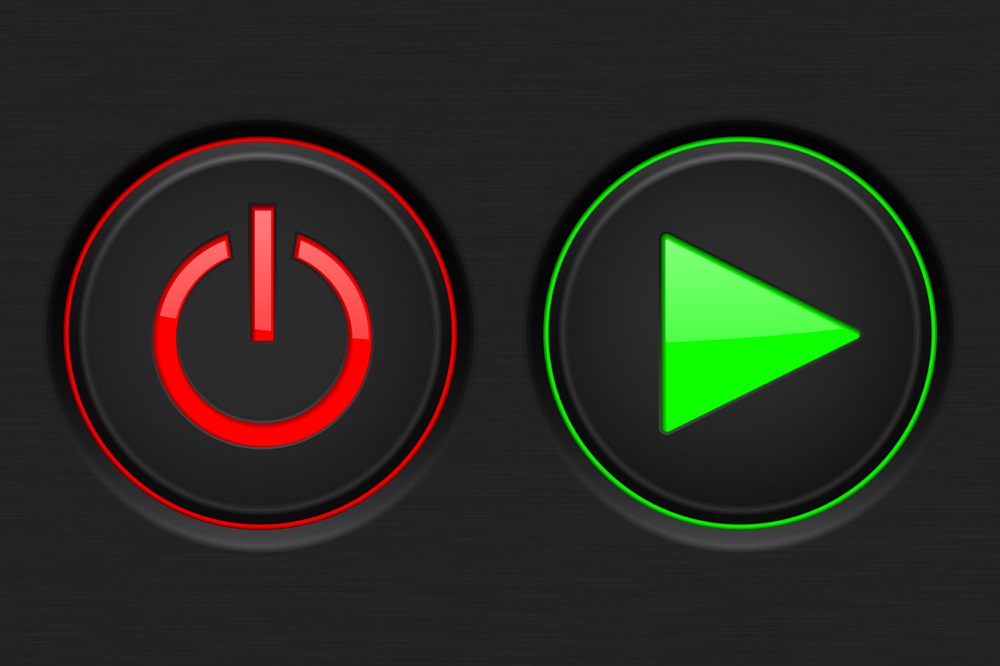As coaches we want to make a difference. We want to see our clients grow and develop. We are motivated to see clients become unstuck, to achieve their goals and be successful. Sometimes subtly though, our great intentions can go awry. We fall into the trap of thinking that we know best. The solution is obvious! We know the answer and we are sure if it. Our ‘Righting Reflex’ has kicked in!
This is a term that Stephen Rollnick and William Miller coined, the Founders of Motivational Interviewing, to describe the need to find the answer, the solution to a problem or to step in and tell others what to do. This is Righting-Reflex is different from skilful advising when appropriate and where the context welcomes that approach.
As coaches, we can be especially prone to this Righting-Reflex syndrome, if we are used to being in an advisor in some other aspect of our professional roles. We are in the habit of offering suggestions that are often valued by others. Our capacity to advise is recognised and endorsed. This way of thinking and contributing is one of our well-trodden brain pathways. However, we really don’t have to be a seasoned advice giver, to find ourselves drawn into offering our own solutions to our clients’ issues. Any coaches can get caught up in it. Care needs to be taken to not fall into this trap.
Why? Well, certainty of rightness can feel good, so obvious and a sure way forward!

Take time to pause
When the certainty that you have that right answer takes hold in a coaching session, then this is the time to pause. Time to take note of what is going on in you and curb the influencing pressure you are feeling. Becoming more aware and open to the possibility that you might be in the strong and automatic grip of your Righting-Reflex slows down your reactivity. If you notice this, then you can breathe, create some space and in that moment loosen that tight Righting-Reflex hold.
When any coaches start thinking for their clients, rather than forming a thinking partnership with them, they become less effectiveness. They stop listening well and dilute the coaching process. They get caught up in providing ready-made solutions rather becoming solutions-focused and walking alongside their clients. Supporting their thinking, exploring their solutions, their choices, and their decisions.
Is there another side to this coin?
Surely though, being decisive and knowing how to quickly solve problems is a strong capability and valuable? Should we not be encouraging these skills in our clients? Isn’t knowing the right action to take and having a sense of the right thing to do, a real asset?
Isn’t stepping in and ‘righting’ the situation, especially when there is a crisis, essential?
Of course, at work we do sometimes does need to make a deft and astute decision, especially when the pressure in on and action needs to be taken. It is always though context specific. Being decisive and wisely applying that strength is a professional capability. It is the discerning application of when and how that we are wanting to develop in ourselves and foster in our clients. Automatically responding to the Righting-Reflex can potentially be disempowering rather than empowering to those around us. It is the automatic nature of the reflex that we need to question and challenge in ourselves and our clients.
An example at work
Let’s fast forward to a situation where a problem is brewing between two colleagues. You see this and step in immediately, following your Righting-Reflex to sort it out. The conflict is not life threatening or a real risk to the organisation. Never-the-less, you nip the situation in the bud. There is little time for understanding or exploration, but your intervention stops the escalation. But, has the tension or conflict really been sorted? What will those colleagues learn from your intervention? What might the potential repercussions be?
So, what’s the problem with knowing the right answer like this? Yes, you jumped in and found the immediate solution. But have you done so too readily? Could you have slowed down just a little? Why? Because it is how you regulate your reaction and then wisely apply it that counts.
The problem, as Stephen Rollnick and William Miller, would describe, is that you may have fallen victim to the ‘Righting-Wrong Reflex’. Despite your best intentions, what has just occurred is a demonstration of power and in this case, you may have taken away a valuable learning opportunity from your colleagues. The subtext being that you are there to solve their problems. You have, in fact, robbed them of the opportunity to learn how to think for themselves and to navigate the conflict in their relationship. What happens next time a situation like this occurs? Will they have the skills to deal with this problem again?
Immediate intervention might work, or it could be a temporary measure. Temporary because it may have stopped those individuals from sorting things out for themselves. And the pattern may repeat with you at the centre- righting the situation, rescuing the individuals concerned or solving the issues for them. You might find yourself caught in this cycle of stepping in.
That is not the space you want to automatically adopt either life or work situations. This is especially true in the coaching context. The reason is that it is unlikely to lead to the best outcomes for your client.
The clue is in the name. A Righting-Reflex.
This instinct is called just that because it implies this automatic response. It is some ways a normal response – common in all of us when in a listening space. The chances are though that your Righting-Reflex might have by-passed some important considerations for your client. The first step is recognising this. The second step could then be to channel those good intentions into a Questioning-Reflex instead. A Questioning-Reflex that starts first with you as a coach. Is my intervention here the best one? What might I do differently? What other options are possible for my client?
As Stephen Rollnick and William Miller say the ‘Righting-Reflex’ is a concept that occurs in many walks of life. As coaches, who have likely been drawn towards a helping profession, it is easy to fall into this trap. The problem is that, when this happens, lots of other unhelpful ‘side-effects’ can occur.
For instance, you have just given in to the instinct to ‘jump in and fix’. You have just implied that you are there to solve problems for your client. In doing that, you have accidentally wandered into an ‘expert role’. The dynamic has shifted. You have taken on too much of the responsibility to find a solution that is not yours to discover.
The issue is the client’s, not yours to sort out or come up with. You could be in your client’s way at this point. The session emphasis has just shifted from being the client’s problem, to being your own. You may have just inadvertently diminished your client’s sense of self-efficacy and unwittingly added a false, inflated sense to your own. You now have a power imbalance where the expectation can become that you will do this every time.
When you feel the pull to fix or give solutions, here’s some questions you might ask yourself:
- How can I curb the strength of my Righting-Reflex at this point in the conversation?
- Can I graciously let go of my own great insight or brilliant solution?
- Am I making myself centre stage just now?
- Am I too invested in being the expert or showing that am adding value here?
- How can I step back and make room for my client’s thinking right now?
- How can I shift my position?
- Could my client be one incisive question away from generating their own solution?
- If I respond and offer this one, right solution (that I am so wedded to) will I risk closing my client’s thinking down to other options?
- How will my solution, encourage my client’s own commitment to follow through?
- Where will my client’s agency be if they do this to please me?
- Could I be coming across as patronising with an attitude of I know best?
- How can I support and challenge my client to generate several options for themselves?
- If I jump in now with advice right now, have I really conveyed a sense of empowerment and respect for my client?
Is there ever a time that you might offer your ideas?
There might be some occasions when offering your ideas or your thoughts are relevant and appropriate in a coaching session. It will usually be the exception and not the rule! The quote below sums up the offering any kind of advice or guidance:
“Advice is like snow; the softer it falls, the longer it dwells upon, and the deeper it sinks into the mind.” — Samuel Taylor Coleridge
It is all about how you carefully frame the intervention. Plus, patience, timing and gaining permission from your client before you offer input.
The considerations are, have you:
- Asked the client what they already know or what ideas they already have?
- Explored if there are more options? Asking if there are any more? What might they have missed?
- Requested permission from your client to float an idea or a possible solution into the existing mix?
- Made sure that you are framing your suggestion so that it does not come across as directive? That you are not becoming the expert, giving advice, or offering the final word here?
- Highlighted that what you are putting out there is simply an idea or a thought amongst many potential options? That what you are about to offer into the conversation is not a ‘right’ answer or necessarily the ‘best’ solution?
Remember questions have the potential to open thinking up. Especially thoughtful, well-timed questions. Definitive answers have the potential to shut it down. Especially, rushed answers, or the right answer – however well-intentioned. So, in curbing your Righting-Reflex, you will become a better coach and serve your clients more effectively.
About us:
We create the space for leaders to step back, think clearly, and navigate complexity with confidence. By sharpening the narrative that drives decisions, teams, and performance, we help leaders move forward with clarity and impact. Our approach blends deep listening, incisive challenge, and commercial focus—strengthening leadership at every level, from business transformation to boardroom decisions.
“We share resources that help coaches deepen their practice and expand their impact. The articles on this site are designed to spark fresh thinking, offer practical tools, and support the continuous growth of coaches at every stage. “
Jude Elliman
Founder
Our Core Approach:
We work with leaders to sharpen their thinking, strengthen their leadership, and navigate complexity with confidence. Our approach is built around three core areas:
Narrative Coaching – Working with the stories that shape leadership, teams, and organisations.
Commercial Focus – Cutting through complexity to drive clear, strategic decisions.
Challenge & Space – Asking the right questions while creating the space to reflect and grow.
Through this, we help leaders drive transformation, align teams, and make high-stakes decisions with clarity and impact.




